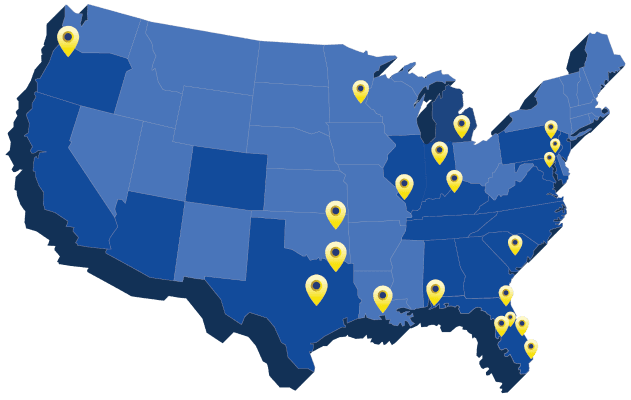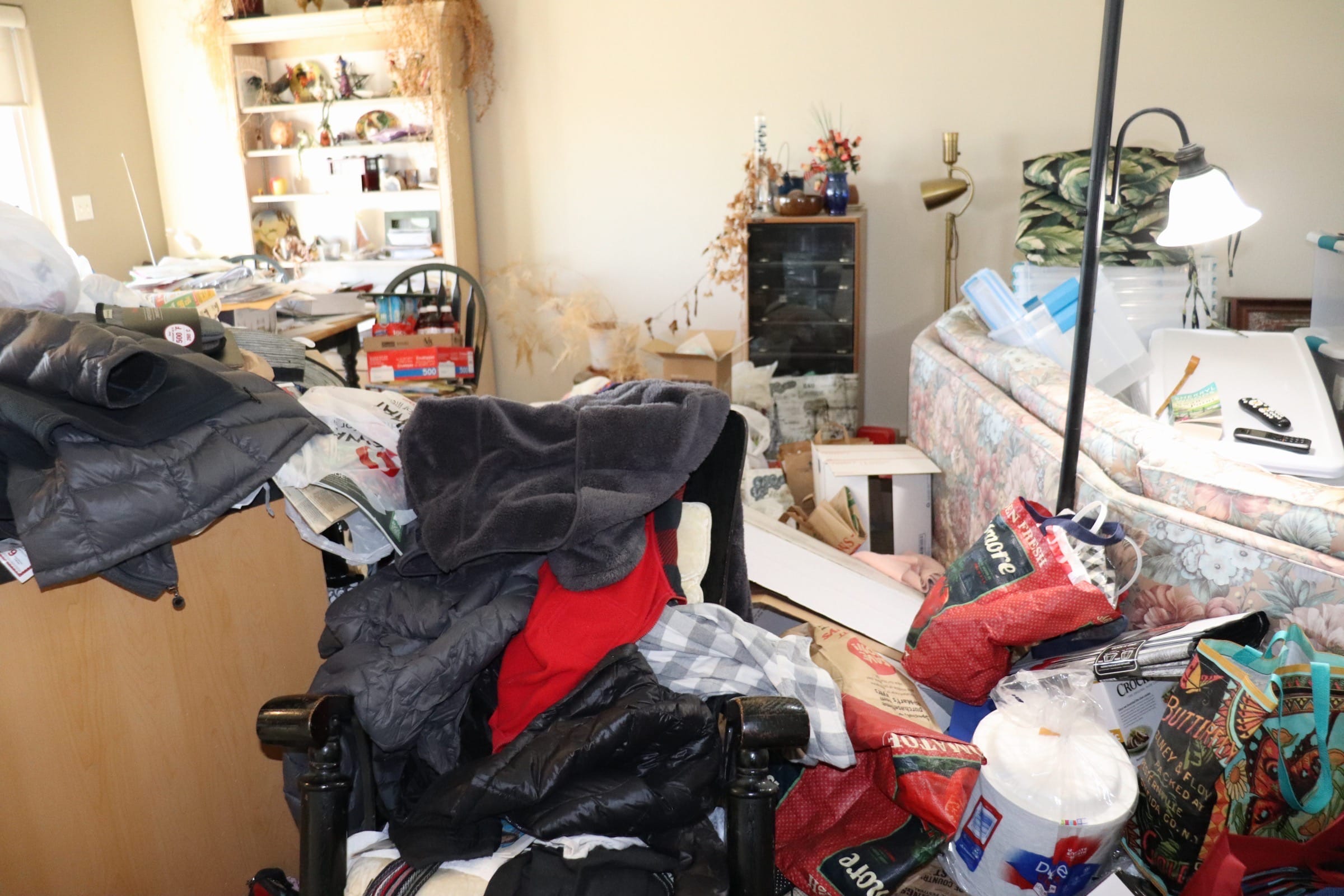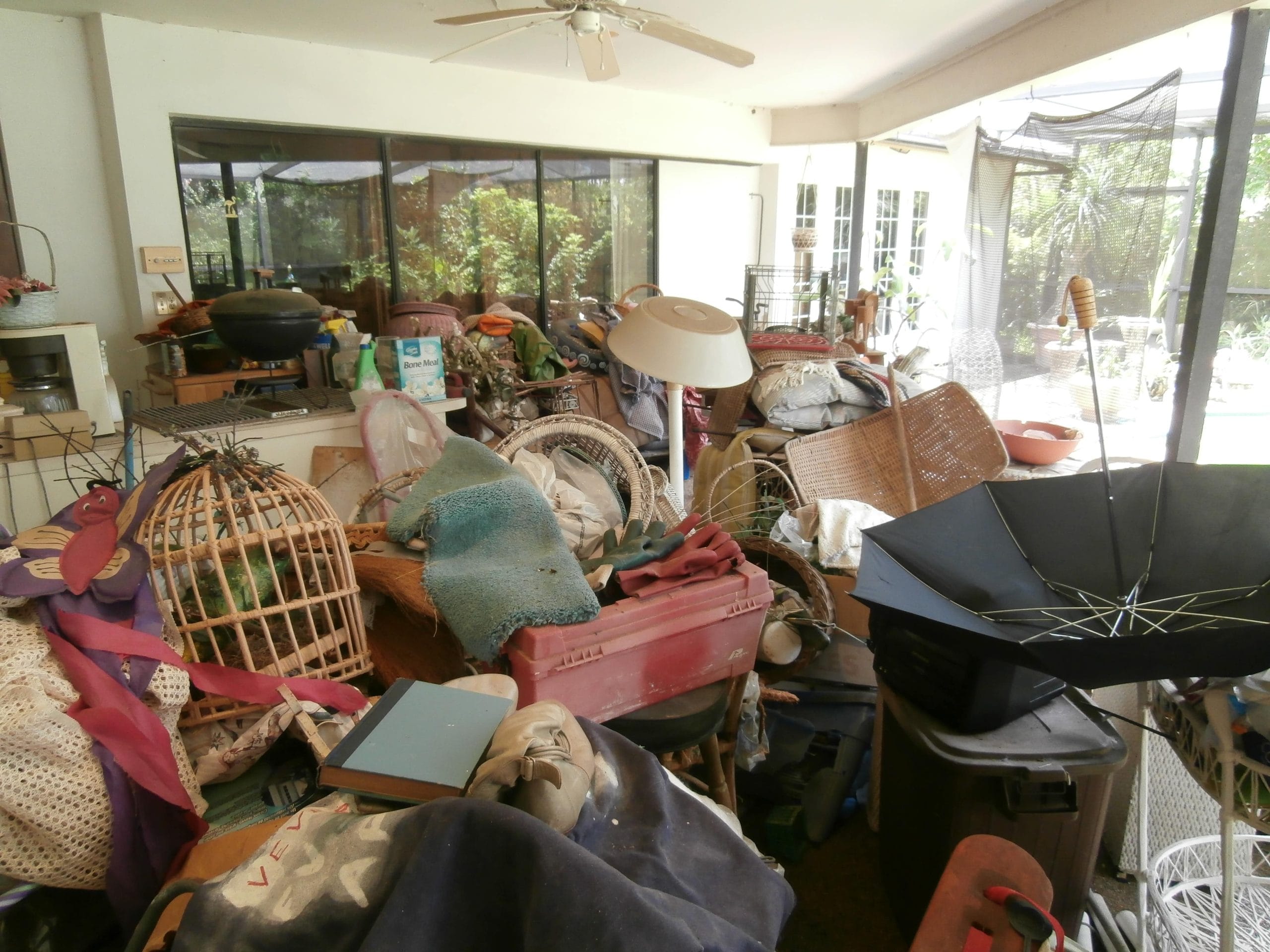The Cause and Remedies of Extreme Hoarding Situations
Hoarding is a serious disorder that entails the obsessive accumulation of personal belongings, animals, or trash. The hoarder is overcome by a perceived need to keep excess things.
Life-altering consequences like financial instability and legal intervention can result if a hoarding situation continues unchecked. Hoarders strain their support network with these issues because the consequences have a ripple effect. The Clutter-Hoarding Scale, developed by the National Study on Compulsive Disorganization, classifies hoarding into five levels. Level 5 Hoarding is the most extreme and dangerous stage, where entire sections of the home are inaccessible, major structural damage exists, and severe biohazards are present.
Did You Know? Hoarding disorder can lead to financial instability, legal intervention, and severe health hazards if left untreated.
Signs That a Hoard Has Escalated to Level 5
f a home exhibits the following indicators, it has likely reached Level 5 hoarding:
- Entire sections of the house are inaccessible
- Severe structural damage (collapsing floors, crumbling walls, leaking roofs)
- Overwhelming fire hazards (cluttered exits, flammable materials)
- No electricity or running water due to neglect
- Accumulation of human and animal feces throughout the home
- Severe infestations of rodents, cockroaches, and insects
- Health-threatening levels of mold, mildew, and airborne toxins
- Residents live in unsanitary conditions, often in a single pathway or “nest”
- The home may be condemned due to extreme damage and contamination
Warning: Level 5 hoarding poses serious health, fire, and structural risks. Immediate intervention from mental health professionals and biohazard cleanup specialists is strongly advised.
What is a stage 5 hoarding situation?
A stage 5 hoarding situation means that there are imminent fire hazards, entire sections of the house are inaccessible, there is no electricity or running water, and there is an accumulation of human feces. This compounds the issues found in the lower stages of hoarding, such as unusable rooms and structural damage. Let’s look at some of the defining characteristics of stage 5 hoarding.
Key Indicators of Level 5 Hoarding
Entire Parts of the Hoarder’s Residence are Inaccessible
The hoarder has accumulated so much stuff that most of the house is inaccessible. Objects will be piled up to the ceiling in all rooms in the house. Stairwells, attics, and basements will be filled with objects. Hallways are rendered useless because they are full of hoarded stuff, and bathrooms, kitchens, and sheds are too full to enter.
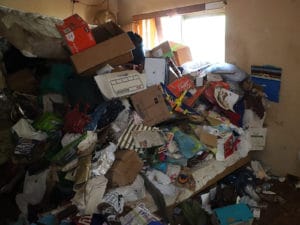
The hoarder will usually have one pathway on top of the hoard that goes to an area that theyve nested. Usually, this nest is just a crevice in which their body fits to lie down without any more space for other activities. Food consumption, cooking, bathing, and using the restroom are all done from this one designated area.
Warning: Hoarders at this level often live in a single small pathway or “nest”, where they eat, sleep, and use the restroom due to lack of space.
Severe Structural Damage to the Hoarded Home
The home has widespread structural issues, including:
- Caving floors due to the weight of the hoard
- Crumbling walls and exposed beams
- Collapsed ceilings and leaking roofs
- Burst pipes and extensive water damage
There is severe structural damage caused by the hoard. Repairs that needed to be done in the past that were inaccessible or unnoticed because of the excessive accumulation of belongings have now hit a critical point. The structural damage is widespread. The floor may be caving in across an entire room or section of the house, and the roof will most likely be greatly compromised.
Extensive water damage will exist on both the ceilings and the walls. Multiple windows may be busted. Window seals and window frames will be rotting or disintegrated from water damage. Pipes will have burst and flooded areas like the basement without any objects being removed.
The hoarder will still find value in the things stacked up that are completely ruined by the elements getting into the structure. They will be so used to the consequences of dilapidation that it will take convincing to sway them into seeing the direness of the situation.
Entire walls will have crumbled in because of mold damage. The weight of the hoard pressing on the drywall will have caused beam exposure. Places, like where the drywall has now crumbled to create a hole, are filled with hoarded items.
Quick Tip: Some damage may be irreparable, but professional cleanup and property restoration can help stabilize the home.
Major Fire Hazards Throughout the Hoarders House
The entire hoarded house is an extreme fire hazard. There is a huge amount of flammable material in the house, and there are no fire exits. The density of the hoard presents a huge fire load, which refers to the ability of a structure to fuel itself while burning. All windows, exits, stairwells, and doors are not easily accessible should an emergency happen.
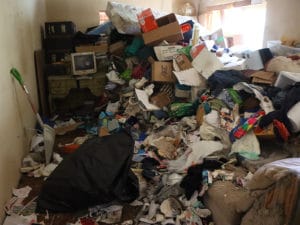
Level 5 hoarders do not recognize the extensive fire danger. They may smoke, burn incense, light candles, and cook on propane stoves amid the hoard creating an imminent danger. Should they lose control of anything burning in the house, it will become an inescapable inferno.
All of these signs should be addressed before a fire hazard, or air/biohazard toxins are able to take over the space.
Family members often take notice first in Stage 2, and Stage 3 of Hoarding Disorder.
Warning: A fire in a Level 5 hoarded home is an inescapable inferno. Professional intervention is critical.
No Electricity or Running Water Due to Neglect
Because the hoard is so big that it blocks access to places that need repair, the hoarded house has fallen into disrepair. Toilets do not work, sinks do not work, and electrical wiring and infrastructure around the house is compromised.
Often, a stage 5 hoarder will spend so much on the continued accumulation of stuff that they cannot pay their bills and their services have been shut off. They will live for years without utilities if it means they can keep their hoard.
Theyve many times built a relationship with their belongings in a way that makes them feel attached to every last object. Clutter and boxes that serve no future purpose will be kept and start the progression towards higher levels of hoarding if left unchecked.
An Accumulation of Human and Animal Feces in the Hoarded Home
At this stage, waste disposal is non-existent. Common problems include:
- Human and pet waste scattered throughout the home
- Rodents urinating and defecating on every surface
- Garbage bags of waste stored inside rooms
- Severe odor and airborne biohazards
Rodents and other pests will have urinated and defecated all over every part of the home. Almost all objects will be contaminated with excessive urine and feces. Cockroaches and other insects have thriving communities within the hoard.
Because toilets don’t flush and there’s no place to put garbage, the home will fill up with human and animal feces. Pets will relieve themselves wherever they see fit among the hoard because there isn’t a space designated for defecation.
Health Risk: Exposure to feces and urine can lead to serious bacterial infections such as E. coli and salmonella, respiratory illnesses like pneumonia and asthma, and increased risks of insect-borne diseases. Long-term exposure can also cause chronic lung conditions and irreversible property contamination.
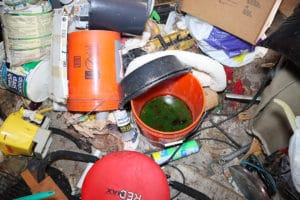
Unfortunately, there are times in extreme hoarding homes where excrement and all sorts of waste will accumulate in bottles or be pooled in the backyard. A stage 5 hoarder may use a bucket when nature calls so they can carry their waste into the backyard and dump it out into a highly contaminated area that theyve designated for dumping out waste.
Waste may be collected in jugs and piled into a specific area of the house like a bedroom.
Some hoarders feel an attachment to their excrement and begin hoarding it along with possessions and trash. This is the most extreme kind of hoarding, even in stage 5, and needs a professional decontamination crew to aid in cleanup.
How to Help a Level 5 Hoarder
Often, a home that has reached level 5 will have to be completely gutted if not condemned due to the damage under the hoard from neglect. The hoarder themselves will be in complete denial about the severity of the situation and will be combative during the clean-up effort.
Steps to Take:
- Speak with compassion – Avoid judgment and accusations.
- Encourage professional intervention – At this stage, DIY cleanup is unsafe.
- Seek mental health support – Hoarding is tied to anxiety and trauma.
- Hire a specialized hoarding cleanup service – Experts can handle biohazard cleanup, structural repair, and deep sanitization.
Why Choose Spaulding Decon for Extreme Hoarding Cleanup?
- Compassionate & Discreet Cleanup Services – No judgment, just solutions.
- Biohazard & Structural Remediation – We remove waste, pests, and contamination.
- Full Property Restoration – We repair water damage, fire damage, and structural issues to make homes livable again.
At Spaulding Decon, we can provide the biohazard remediation professionals that you’ll need to tackle the immense hoarding situation with which you are confronted. Our teams will create a custom cleanup plan while working in conjunction with any mental health professionals that are also involved with the hoarder.
Need Urgent Assistance? Call 866-726-2316 for Immediate Help.
Take Action Before It’s Too Late
Don’t wait for Level 5 hoarding to cause irreversible damage. Severe biohazards and structural risks make this level unlivable without professional intervention.
- Recognize the warning signs.
- Seek expert cleanup before the home is condemned.
- Contact Spaulding Decon for discreet, professional hoarding remediation.
Need Help Now? Call 866-726-2316 for Expert Hoarding Cleanup.
We help ensure that your loved one will have access to the resources they need to unbury themselves from their hoard.
Find a Hoarding Cleanup team nearest you: Spaulding Decon Locations
